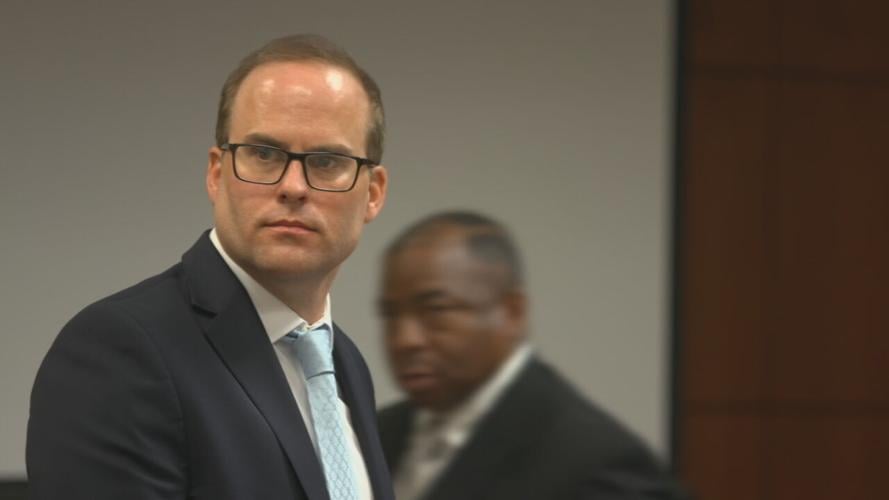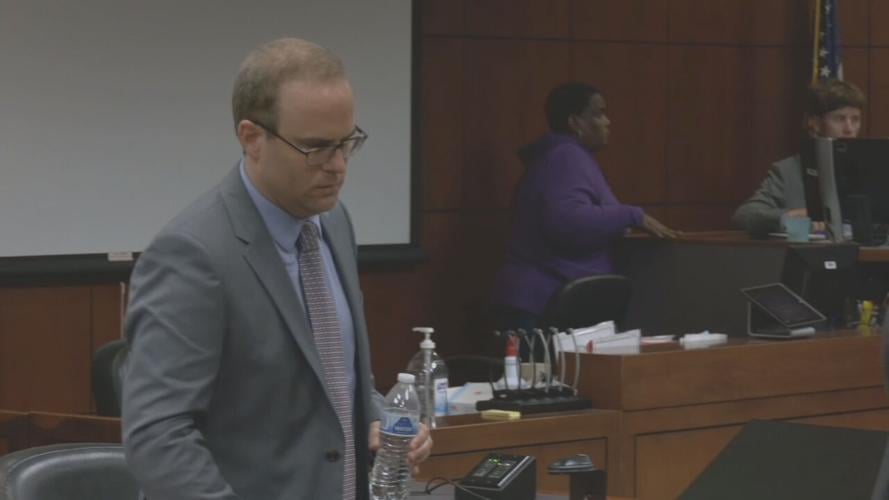LOUISVILLE, Ky. (WDRB) -- Tuesday marked the fourth day of witness testimony in the trial of a man charged with murder after prosecutors say he was driving drunk and caused a crash that killed a former University of Louisville cheerleader.
Bradley Caraway, 34 at the time of the crash, was under the influence when police say he crashed the vehicle that he and 25-year-old Shanae Moorman were riding in during the early morning hours of Aug. 2016.
Police said Moorman was the only one at the scene when officers arrived. She had been thrown from the vehicle and was pinned under it. She died as a result of her injuries.
Caraway was found hours later, walking on the Gene Snyder Freeway shirtless and barefoot. Police said his blood-alcohol content was at least twice the legal limit.
On Tuesday, jurors heard from the Medical Examiner Dr. Jeffrey Springer who did the autopsy on Moorman, a paramedic who responded to the crash and Dr. Bill Smock, a former medical examiner with expertise in medical forensics.
Smock is a key witness for the prosecution because it was his investigation back in 2016 that found Caraway to be the driver based on evidence of windshield glass in his hair, seatbelt marks that would show he was restrained and didn't fly from the car and therefore lived, among other things.
Caraway's defense team, led by attorney Rob Eggert, is arguing that Caraway was not the driver of the vehicle at the time of the crash.
Dr. Springer was the medical examiner who performed Moorman's autopsy. He testified that she died from traumatic asphyxia after the crash.
Springer said he commonly sees blunt force trauma as the cause of death for many car crash victims, but that was not the case for Moorman. Instead, he said "traumatic asphyxia" means she died because she was unable to breathe after she was pinned under the car.
CARAWAY MURDER TRIAL continues | It’s day 4 of testimony from witnesses. The jury already heard from medical examiner Dr. Jeffrey Springer (suit) and now is the paramedic from the night of the crash. Background: https://t.co/ZSV6S6bl8MTuesday 🧵@WDRBNews pic.twitter.com/BDqS9z3fo1
— Monica Harkins WDRB (@MonicaHarkinstv) September 5, 2023
Dr. Springer's testimony was important because it speaks to the question of whether Caraway could have pulled Moorman out to help save her.
"Asphyxia is the lack of oxygen in the body or the inability of the body to use oxygen," Dr. Springer said. "There are multiple causes of asphyxia: traumatic asphyxia is one of those, and that is due to the compression of the body by an object that prevents the diaphragm and the ribs from rising and therefore bringing in air, and thus no oxygen."
Dr. Springer said Moorman also had broken ribs.
One of the prosecution’s main arguments is the driver’s side seatbelt showed it had been used, indicating that Caraway was driving.
"Most likely someone who is ejected from the car is not wearing a seatbelt," said Dr. Springer.
But Eggert questioned whether Springer was qualified to determine that.
"You're not a seatbelt expert," he said.
"No," Springer agreed.
Dr. Smock has about 40 years of experience in medical forensics and analysis of car crashes.
"Caraway was the driver," he testified.
He also analyzed Caraway's injuries following the crash.
"This is consistent with wearing a seatbelt," he said as he showed pictures of Caraway's injuries to the jury.
Dr. Smock said there were pieces of glass in Caraway's head at the scalp and scratches which showed he hit the driver's side windshield.
The defense then questioned Smock's testimony, which mentioned more glass in Caraway's cheek.
Eggert called it a "key piece of evidence, and we don't have it."
To which Smock agreed it didn't appear in any documents, but Smock said it was in fact there.
Eggert argued it's Smock job to document all evidence so it must not exist.
Eggert also questioned Smock's resume, but Smock accused him of "splitting hairs."
Caraway's attorneys still have to call their own witnesses to testify.
Copyright 2023 by WDRB Media. All rights reserved.






